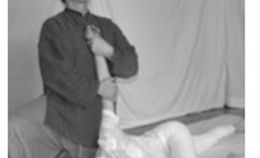The results are in! Qigong (pronounced chee-gong) improves just about every aspect of life. Weight control, peace of mind, balance, productivity, performance. You name it, any realm of human endeavor is made better through consistent regular practice of this mindfulness based moving meditation practice. Not to be confused with conventional "exercise," Qigong, a timeless practice with roots in ancient Taoist understanding, stands above the crowd as the practice that will unify and harmonize all of your health and wellness efforts.
There are many forms and practices that reside within the umbrella of Qigong. Qigong itself roots in deeper meditative practices such as the Dao Yin and the Nei Dan, and also lies at the root of the more well known martial arts practice of Tai Chi. At it's roots, Qigong, rather than a fighting art, is a healing art. A way to heal, harmonize, awaken and restore the flow of life energy throughout your whole being; body, mind and spirit.
At the core of all Qigong practice is focused awareness. And in that focus, myriad experiences unique to each individual are reported. One of the first lessons of Qigong practice is that "there is nothing you are supposed to feel when you do Qigong. Rather, simply feel whatever it is that you feel." Sadly enough, many of us are cut off from really feeling what we are feeling, and so to that end, Qigong provides us with a few guidelines. The foundation for awakening your feeling sense is what we call the three intentful awarenesses; posture, breath and mind.
Posture is where we start. There's a famous "stand still posture," also known as "stacking the bones," or "stand like a tree." In this posture, similar to what is called "mountain pose" for those familiar with yoga asana practice, one strikes a basic standing posture that enhances the awareness of where all parts of your body are in space at any given moment.
Checking in with the science of the nervous system, we understand that postural awareness is a function of sensory nerves. And standing still, and tuning into the sensations coming in thorugh all your sensory nerves is the root of postural awareness. And ultimately from this awareness you can modify and adjust your posture, letting go of any unnecessary or unconscious tension that you may be carrying in any part of your body.
The second awareness is breath. Of course, as you enter into a practice of standing still, the first thing you might notice is that there is no true stillness! There's always something moving in your body. And with all the various activities taking place within your body, one that is most essential to bring to awarness is the movement of your breath. The in breath filling you up, the out breath emptying you out. And it is this fundamental rhytmic movement that is thd focus of this practice.
Now there are many, many, many teachings on breath. The first to understand is that of all the autonomic nervous system functions (functions that happen automatically, without our conscious intervention), the breath is the one where we have a certain level of control. We can consciously manage and manipulate the breath rhythm, speed and depth. And therefore, it is a perfect system for us to practice the art of connecting to all of the functions of our being. We begin with slowing the breath down, smoothing it out, and deepening. This one simple act will begin to help you calm and balance your entire nervous system.
Finally we bring our awareness to the mind. That beast of an unruly being that can be focused and concentrated on an important task at hand, or can be wildly ranging off into distant places and times, pulling us out of present moment awareness in an instant with worries and concerns and troubles without end. Unless we learn to master its caprices. here the simple, yet not so easy work of mindfulness practices become our greatest allies. And while in the Qigong practice, bringing mindfulness to bear is essential.
One effective practice of coming into mind awareness is to realize that the mind is like the sky. And your thoughts and feelings are like the clouds. Sometimes the sky is filled with clouds, but it never clings to them. The clouds simply float through the sky. So too, our thoughts and feelings can be seen to "float through the mind." The mind need not cling to any of those thoughts. We can simply allow them to pass without dwelling upon them. I liken these floating thoughts to a radio playing in the background. You can choose to listen in, or you can just turn the volume down a bit, and go about your current task. Let the radio play!
So, with these three conscious awarenesses, posture, breath and mind, you have dropped into the basics of the practice of Qigong. From here the vast expanse of clarity, insight, effective action, satisfaction, and relaxation can be fostered and supported. Qigong is a fundamental daily life practice. And giving yourself the time and space to drop into this timeless practice has far reaching benefits for every area of your life.
In my practice of Meridian Gesture Qigong, I lead people through a range of graceful movements, designed on the foundation of the trhee awarenesses to open up and support all the functional aspects of body, mind and spirt. Consistent practice of at least three times per week yields the greatest benefits over time. And you can enjoy guided practice of the meridian gesture Qigong all week long by becoming a part of the HeartMind Meridian Qigong online community. If your interested in improving your life, and learning a meditative movement method that you can practice for the rest of your life, I invite you to contact me directly for more information on how to join in the fun!















